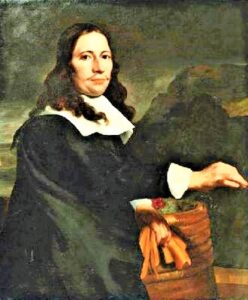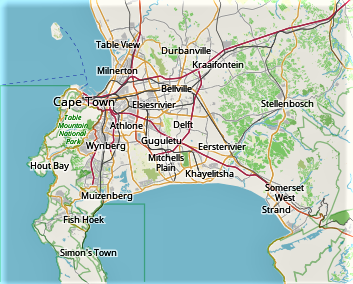The “Circle of Peace and Tranquility”: The Karamat of The Sultan Shaykh (Sheikh) Abdurahman Matebe Shah (Part 3)
TRANSCEND MEMBERS, 22 Aug 2022
Prof Hoosen Vawda – TRANSCEND Media Service
“The Banishment of a Peace Promoter by Imperial Dutch Colonisers to South Africa” [i]
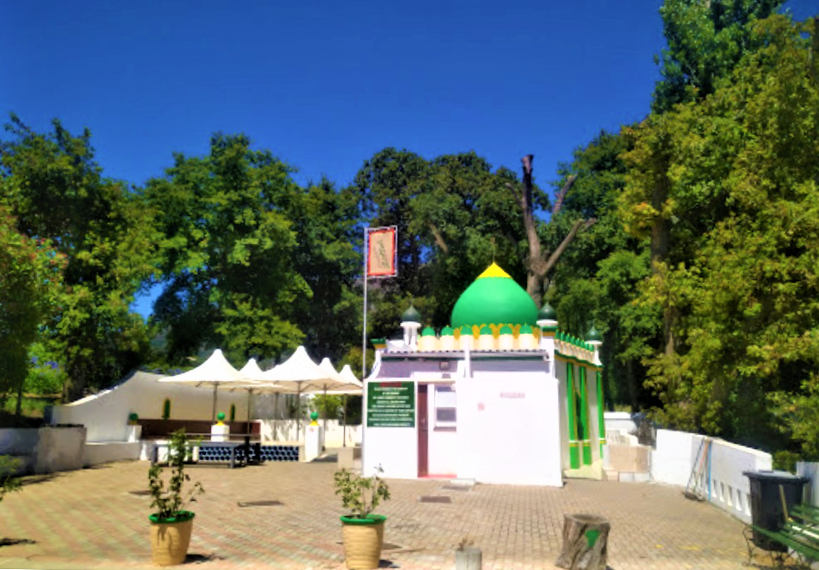
The Karamat (Mausoleum) of The Sultan, Shaykh Abdurahman Matebe Shah in Constantia, Western Cape, South Africa . These Karamats are not the Islamic Mosques, although they have domes.
20 Aug 2022 – This publication is on one of the mausoleums or Karamats in the Western Cape, South Africa, highlighting the important burial sites of Islamic, spiritual men who were exiled from distant, imperial colonies invaded and occupied by the Dutch colonisers in the East and their leaders were banished to the newly discovered colony in the Cape of Good Hope, in South Africa in 1652 by Jan van Riebeeck[1].
As described in Parts 1[2] and 2[3] Collectively, these sites form a spiritual “Circle of Peace and Tranquility”, they are not mosques. In Part 1, the life and mausoleum Sheik Sayed Abduraghman Motura was described. Part 2 highlighted the trials and tribulations of the life of Abadin Tadia Tjoessoep, locally known as Sheikh Yusuf or Sheik Joseph, He was also known as Muhammad Yusuf al-Maqassari.[4] The present publication presents the wars conducted in the East by the Dutch in the 17th century and why the Sultan was banished to the Cape of Good Hope. In the 5th century, one of the eastern empires was Banten, which was part of the Hindu Kingdom of Tarumanagara. One of the Kingdom’s relics is the Cidanghiyang or Lebak inscription, which was found in Lebak Village, Pandeglang city, Banten. This region was later ruled by several kingdoms, such as the Kingdom of Pakuan, the Kingdom of Pajajaran, and the Sultanate of Banten. One of the cultural legacies of ancient kingdoms is the Rampak Bedug traditional dance, performed in the formal ceremonies and celebrations as well as the Batik motifs and design of fabrics.[5]
The Dutch colonisers also attacked the eastern areas, around present-day Indonesia. Batavia, also called Batauia[6] in the city’s Malay vernacular, was the capital of the Dutch East Indies. The area corresponds to present-day Jakarta, Indonesia. Batavia can refer to the city proper or its suburbs and hinterland, the Ommelanden, which included the much-larger area of the Residency of Batavia in the present-day Indonesian provinces of Jakarta, Banten and West Java.
The founding of Batavia by the Dutch in 1619, on the site of the ruins of Jayakarta, led to the establishment of a Dutch colony; Batavia became the center of the Dutch East India Company’s trading network in Asia. Monopolies on local produce were augmented by non-indigenous cash crops. To safeguard their commercial interests, the company and the colonial administration absorbed surrounding territory. The region was an important source of food crops and building materials.[7] The Dutch East India Company established a local government in 1664, which became fully functional in 1682. Chinese inhabitants began to cultivate sugarcane.[8]
Large-scale cultivation negatively impacted the environment, and Batavia’s northern area experienced coastal erosion. The canals required extensive maintenance, with frequent closures for dredging.[9] Residents of the Ommelanden lived in country houses or ethnic kampungs governed by a headman.[10] Trade and the economy flourished. However, East of Batavia, Sultan Agung, king of the Mataram Sultanatem gained control of most of Java by defeating Surabaya in 1625.[11] On 27 August 1628, Agung began the Siege of Batavia.[12] After heavy losses in his first attempt, he retreated and launched a second offensive the following year.[13] This also failed; the Dutch fleet destroyed his supplies and ships in the harbors of Cirebon and Tegal. Mataram troops, starving and decimated by illness, retreated again.[14] Agung then moved east, attacking Blitar, Panarukan and the Blambangan Kingdom in eastern Java (a vassal state of the Balinese kingdom of Gelgel). Hence, the wars led to the exiles and banishments of several members of the nobility and associated court advisors, mainly to the Cape of Good Hope, by the Dutch, at the time. One of the exiles was Abadin Tadia Tjoessoep, locally known as Sheikh Yusuf [15]
The history, is indeed a sordid one, as that of every European imperial colonising force, in the 17th century, with numerous and fierce battles being fought between the indigenous people and European invaders, on an ongoing quest for power, trade and regional superiority on land and the sea. These battles were also fought between the European invaders, mainly the Brutish and the Dutch. Europeans banished Muslim political exiles, together with convicts, to the Cape, who lived under their rule from 1652 to 1994. Politically, Islam was a dominant religion. This is why writers on Cape Muslim history cannot but touch upon relations between the government and Muslims, as it is an extensive task. The prevailing historical literature views the Muslims as “different” to other segments, in the Cape context. [16]
On the 24th January 1667, the ship the Dutch ship, Polsbroek left Batavia and arrived at the Cape on the 13th May 1668, with three prisoners, in chains at the Castle of Soeroesang in 1667. One of them Sheik Yusuf, was incarcerated on Robben Island, while the other two were dispatched to the Company’s forest at Constantia.[17]
Shaykh Abdurahman Matebe Shah , the last of the Malaccan Sultans, although this statement is debatable according to some sources[18], as he was possibly an heir to the Sultanate of Aceh with direct lineage to the Sultanate of Malacca via his father and maternal grandmother. However, he was one of the two prisoners sent to Klein Constantia. He was regarded as Orange Cayen, a title meaning “man of power and influence”, he was seen as particularly dangerous to the interests of the Company.In 1667, and after a fierce battle. Soeroersang fell. The Sultan, Shaykh Abdurahman Matebe Shah, and his two religious advisors were captured. His execution would have made him a martyr, and thus an inspiration to his people to continue the war. The three were thus banished to the Cape becoming the first political exiles here.
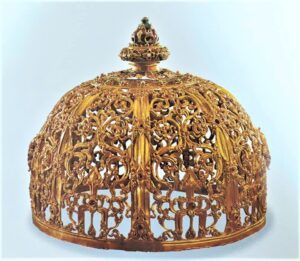
The Crown of Banten Sultanate as one of the inspirations of Banten Batik motif
(Photo: Indonesian National Museum[19])
Oral history relates that Shaykh Abdurahman Matebe Shah, soon befriended the slave population. he met at Constantia, teaching them in the area near the river, where he took his ablutions, meditated and said his prayers. He was a Hafez[20], as well, having memorised the Islamic Quran, an attribute, which he imparted to the slaves in the community, teaching them to read the holy scriptures. He is also reported to have performed miracles, and mystic cures on slaves, according to a rich oral history from the region, transmitted over generations of people who knew the Sheikh. His shrine is at the gateway to Klein Constantia. It was contained in a wooden shack quaintly situated amongst the trees, adjacent to a stream of running water, which is where he was buries[21] The mausoleum was built much later by private sponsors.[22]
The “Polsbroek three” refer to a group of exiles from Sumatra. Two of them are buried in Constantia, a suburb of Cape Town, and the other on Robben Island. They are venerated as saints by local Muslims, who visit their “kramats” or tombs, in the hope of accruing blessings and spiritual aid. Be this at it may, the evidence suggests that from the perspective of the Cape government, they were largely anonymous.[23]
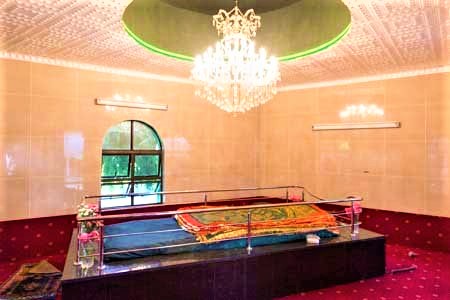
The interior of the Karamat of The Sultan, Shaykh Abdurahman Matebe Shah, showing the actual burial place.
(Photo credit Francois Swanepoel,2014)
The Cape became a place for the official confinement of prisoners in 1681[24] (Davids, 1980: 37). But it had played this de facto role for at least fourteen years. The inscription at the “Islam Hill” tomb at Constantia reads:
“… on 24 January 1667, the ship Polsbroek left Batavia and arrived on 13 May following with three political prisoners in chains, Malays of the West Coast of Sumatra, who were banished to the Cape until further orders on the understanding that they would eventually be released. They were rulers :”Orang Cayen”, men of wealth and influence. Great care had to be taken that they were not left at large as they were likely to do injury to the Company .Two were sent to the Company’s forest and one to Robben Island.” “Man is but a shadow and life a dream.”
(Quoted in Jeffreys, 1936:86)[25]
The governor of the Cape at that period, Cornelis van Quaelberg[26], is seemingly unaware or consciously disdainful of this status. His entry in the ‘Journal’ on the date of arrival reads:
“May 13th Arrival of the Amesfoort, with four others later on. The Zuyt Polsbroek carried the Admiral, the Hon. Joan van Dam, and the Nieuw Middleburgh had on board Knibber as Vice-Admiral. They had encountered a severe storm in the latitude of Mauritius, and nearly a month struggled with bad weather and adverse winds off the coast. Had, however, suffered little damage. Commander Quaelbergh proceeds on board, and shortly afterwards returns with the admiral, who was properly saluted and escorted in. When van Quaelbergh does allude to the prisoners, it is several days afterwards and in these terms:
The three Malays who arrived here as convicts in the return fleet, were sent by. us, two to the Company’s forest, and one to Robben Island in order to be set to work there, each provided with a good chain (Leibbrandt, 1901 :220). The apparent flippancy of van Quaelbergh’ s reference, or lack of it, regarding the three prisoners may be due to two reasons : the importance of other events mentioned; and his own character. The coming of an admiral was no minor event, especially as he reported on the state of the colony to its VOC overseers. It is natural that this event’s significance would temporarily sideline other concerns. With regard to the governor’s character, Theal writes that he was “harsh towards his dependants, cringing towards his superiors.” (Theal, 1964: 161 ).[27] The burghers considered him a tyrant.
Presumably, he had even less time for those under Dutch subjugation, especially if they were classed as convicts. This seems.to indicate that whatever their status in their native land, and perceived as such by the Dutch stationed there, it would be reduced to a common convict’ s once in the Cape of Good Hope. The dispatch of the prisoners to Constantia had a labour motive as well. By December 1652, the area of Hout Bay was already demarcated as a source of wood for the main station. This was a scarce commodity in the Fort area.
Given the means of transport at that ti1ne, this was an area at a considerable distance from the main station. So what originally started off as a temporary destination (the first woodcutters were given enough provisions for eight to ten days) had by 1670 became a permanent settlement in its own right. This was when the Company authorised that potatoes be planted in the area, and its pigs sent there (Sleigh, 1993 :268). Up to 1674, at least, there had been a regular supply of wood from the Bay {four cargoes per month) which indicated that the settlement was, in its early phases, strictly regimented (Sleigh, 1993:268).
Most intriguingly, Adiel Bradlow argues that such isolation may have helped the development of Islam. He notes the existence of graves around the present-day shrines in Constantia, arguing that these could have been the ‘mureeds’· (disciples) of the two prisoners. So, while they may have been isolated from Cape Town they were not isolated from all the people of the town. Moreover, “it also gives one an insight into the kinds of social practice evidenced during this period. Indeed, it is highly likely that the burial places of the two shaykhs were respective points of habitat during their incarceration at the Cape” (Bradlow, 1989:45-46). Aside from labour and isolation, there is another possibility as to why the exiles were so dispatched. Their banishment bound in chains, may have physically reinforced the lack of mental· recognition accorded to them by van Quaelbergh’s journal and its significant omissions, as well as the professed aim of ‘making them sing small.’
The Sheik died at the Cape in either 1682 or 1685[28], and was buried on the spot, near the river, where he took his ablutions, meditated and said his prayers. His shrine is at the gateway to Klein Constantia. The grave of The Sultan Sheikh Abdurahman Matebe Shah, at the gateway to Klein Constantia, in Western Cape, is the oldest known site of deceased pious peace promoters or Auliyahs, ‘known as “Friends of God”, having arrived at the Cape of Good Hope in 1667. Sheikh Abdurahman was possibly the last of the Malaccan Sultans, whose ancestors established the first Malaysian Empire, in the East and who was subsequently exiled to the Cape.
Klein Constantia[29], the first wine farm in Southern Africa, was established in 1685 by the VOC, an official of the Dutch East India Company and the first Governor of the Cape Simon van der Stel[30]. In 1927, Muslim philanthropist Haji Sullaiman Shahmohammed commissioned the shrine, according to Mr Bassier. When he died, his work was continued by his great grandson Faadiel Essop, who is a professor of medical physiology at Stellenbosch University.[31] This region was used to produce wine as well as other fruit and vegetables and cattle farming. Van der Stel, a keen viticulturist, had been the first to recognise the potential of the decomposed granite soil in the sheltered valley facing False Bay and bounded by sea on both sides after he had had soil samples collected from all over the Cape.
He chose this area to plant his vines and named it Constantia. Widely known for his development of the South African wine industry, Van der Stel was of mixed race-origin, the son of a Maria Lievens[32], daughter of a freed Indian slave woman known as Monica of the Coast of Goa, or Monica da Costa. This fact that was largely unacknowledged by the Apartheid government.[33] Following van der Stel’s death in 1712 the estate was broken up and sold in three parts independently named Groot Constantia; Klein Constantia; and Bergvliet.
The Bottom Line is that the Circle of Peace is formed by the geographical location of the graves of pious and peace-loving protagonists who were brought to South Africa under the colonial occupation by the Dutch from their birthplaces in western India as well as South East Asia and include up to 25 different “Men of Repute”. Visiting these shrines is a unique experience. The profound feeling is, as if one was in the living presence of history, standing in a sacred spot, infused with spiritualism. These Karamats have a serene atmosphere, with the tranquillity, peace and harmony.
The Karamats have a feeling that time, materialism and the global belligerence does not matter and one is really encapsulated in a time capsule, whereby there is communication, between the visitor to these karamats and the persons of repute interred within the mausoleums. The feeling of contact and oneness, is present through millennia, when the beautifully designed mausoleums are admired. In case of the Karamat of The Sultan, Shaykh Abdurahman Matebe Shah, a beautiful edifice, designed by one of Cape Town’s leading architects, furthermore Sheikh Sayed Mahmud also lies in the Kramat designed by the late architect, Gawie Fagan. The garden layout was designed by his wife, Gwen Fagan. The words inscribed on the plaque in the shrine read: “Man is but a shadow, and life a dream.”[34]
Some years ago, two men set fire to the kramat (“Kramat site torched,” Bulletin August 9, 2018), but Mr Bassier said that not one letter in the Qurans stored in cupboards there, were burnt, despite the cupboards themselves burning. “It is karamat, a miracle,” in itself, he smiled, and constructed by The Cape Mazaar (Kramat) Society, completes the picture of a feeling of extreme peace and contentment. Any visitor to any of these Karamats, cannot help experiencing a feeling of binding themselves to a segment of piety and do goodness when departing from these Circle of Tranquillity and taking with them eternal peace, back home. This is indeed a profound feeling which defies any rational and scientific explanation. I ts a feeling that is w[35]orth search for by visiting any or all of these Karamat. Fortunately, these Mausaleums have been declared as heriotage Sites by the South African government.
Friday 03rd December 2021, marked an important milestone for the Isamic Community not only in Cape Town, but countrywide when ten Kramats were officially declared National Heritage Sites. The Cape Mazaar Society [36]and Vidamemoria Heritage Consultants[37] initiated the serial nomination of the Kramats, also known as Mazaars, to be officially categorised s National Heritage Sites. The announcement was made during a ceremony at the Sayed Abdul Malik Kramat in Vredehoek.[38] Sheikh Abduragmaan Alexander[39], Iman of the Massidul Quds in Gatesville and President of the Cape Mazaar Society, says the declaration also referred to as the ‘Circle of Tombs’ follows a prophecy made more than 250 years ago that there would be a ‘Circle of Islam’ around the Cape. He says it honours the tombs of Wali (saints) known as Auliyah (friends of the Almighty), and who were originally brought as slaves to the Cape.
The Cape Mazaar Society was formed in January 1982 initially for the upgrade and maintenance of the Shrine of Sheikh Abdurahman Matura (R.A.) on Robben Island. However, the name chosen “The Robben Island Mazaar (Kramat) Society” was rejected by the old Prison Authorities. Changing the name to “The Cape Mazaar Society”[40] meant that we now had to look at all the Kramats in the Western Cape as custodians. The Cape Mazaar (Kramat) Society is a constituted body and is recognised by the Muslim Judicial Council, the South African National Monuments Council, the Cape Regional Services Council, the Cape Town City Council and the Correctional Services Department amongst others.
Their proven track record has put them on a firm standing with the aforementioned organisations. The Society’s accounts are audited annually by an independent auditor.
Mr. Mahmood Limbada[41], Council chair for the Cape Mazaar Society, says the Kramats are significant for being resting places of Muslim Holy Men, or saints and are often visited by those of the Muslim faith for deriving spiritual benefits, a tradition which has been in existence in the Western Cape for the past three centuries. “The legacy of these saintly political prisoners are as important in the South African context as all the heroic freedom fighters we honour as a nation, as they fought relentlessly against the oppressive colonialists and slave masters of the day. These kramats are also significant in that they are the resting places of the pioneers of the Muslim community in South Africa.”[42]
The ten Karamat sites being officially recognised as the first in the ‘Circle of Tombs’ are:
Sheikh Yusuf Kramat, Macassar[43]
Sayed Mahmud, Summit Road Constantia
Sheikh Abdul Mutalib, Constantia Forest
Sheikh Abdurahman Matebe Shah, Constantia
Tuan Dea Koasa, Simonstown
Tuan Ismail Dea Malela, Simonstown
Sheikh M Hassen Ghaibie Shah, Signal Hill
Tuan Kaape-ti-low, Signal Hill
Sayed Moegsien bin Alawieal Aidarus, Mowbray
Sheikh A ibn Muhammad AlIraqi, Mowbray
Sheikh Noorul Mubeen, Oudekraal
Mr Ben Mwasinga, Manager Built Environment Unit[44] of the South African Heritage Resources Agency[45], says the Kramats were found to have a significant value that is unique in the South African context. “With the declaration of the Kramats, the declaration of sites in Bo Kaap and now moving on to the declaration of District Six, we are now, I believe, beginning to tell the story of Islam in South Africa. “Beyond that we are now beginning to unpack the histories that belong to many minority groups, not just the Islamic community, but that of the Khoi and San as well and the other minority groups you find in the country.” According to Mwasinga this is “just the beginning” in a series that will cover more than 20 Kramats.
Alexander says: “It a very blessed day for us indeed and these Kramats are symbols of defiance against colonialism, oppression and injustice and they continue to serve as inspiration for us to stand up for the truth and for the guidance of people. It pays homage to and salutes the sacrifices of our Muslim forefathers for the role they played in that liberation from the tyranny and enslavement of the colonial occupiers of yesteryear.” Moulana Abdul Khaliq Ebrahim, First Deputy President of the Muslim Judicial Council [46](MJC), says: “The heritage declaration allows us as South Africans and the South African Muslim community to acknowledge that Muslims are an integral part of the broader society. It has been part of a struggle for the dignity, for the freedom and the liberation for all people in our beautiful country.”
Ms Quahnita Samie[47], owner of Vidamemoria Heritage Consultants, says she elated that this important announcement finally came to fruition. “The process has taken so long to recognise and honour these sites. It’s a celebration of the works that’s been done by the Cape Mazaar Society in honouring the men and women who are buried at these sites who have brought Islam to South Africa. The men that are buried at these Karamats are the men who brought Islam to the Cape.” She continues: “Muslims are only 2% of the population of South Africa, so the fact that Muslims are so visible not just through the Kramats, but also through being able to access halaal food, just having a place and a role in South African history is quite outstanding and it all started with these men.”[48]
While the author has concentrated only on three of the 25 Karamats, in the Western Cape, each spiritually enlightened person of repute, represented by the Karamats, has contributed to the character of the indigenous people of the region, as well as influenced their lifestyles, food, culture, religion, languages, traditions and contributed to the cosmopolitan flavours of general culture in the Western Cape as well as the rest of South Africa. These Karamats represent the past history of resistance, against colonial oppression and discrimination of the indigenous people, by these auliyas or “Friends of God”, [49]hence they are not only spiritual sites of peace but also the sites remembering them as the first political dissidents, in the official pre-apartheid South Africa since 1948 until liberation in 1994.
It is to be noted that while the Afrikaner, White Minority Government in South Africa, did not invent apartheid, but perfected it as the greatest official government philosophy of racial discrimination against a minority. Realistically, discrimination based on race and ethnicity was introduced by colonial, European invaders as they did in China and India,[50] a philosophy which is still persistent and widely practised by the Israeli Government[51] against the Palestinians, after 1948[52], at least, officially during the Sabra and Shatila massacres.[53]
References:
[i] Personal quote by author August 2022
[1] https://www.bing.com/ck/a?!&&p=55f5fbc1ab1c1a27JmltdHM9MTY2MDk5NDUwOSZpZ3VpZD1mNzE5ZGVhNy02YTUyLTRiMzktOWJmNS0yY2ZlOTIyMDQ1NGMmaW5zaWQ9NTE4Mw&ptn=3&hsh=3&fclid=481ab0a5-207a-11ed-b914-a1c5a9058000&u=a1aHR0cHM6Ly9lbi53aWtpcGVkaWEub3JnL3dpa2kvSmFuX3Zhbl9SaWViZWVjaw&ntb=1
[2] https://www.transcend.org/tms/2022/08/the-circle-of-peace-and-tranquility-the-karamat-of-sheik-sayed-abduraghman-motura-part-1/
[3] https://www.transcend.org/tms/2022/08/the-circle-of-peace-and-tranquility-the-karamat-of-abadin-tadia-tjoessoep-part-2/
[4] http://www.e-family.co.za/ffy/g5/p5815.htm#c5815.1
[5] https://www.iwarebatik.org/banten-eng/
[6] https://archive.org/details/bijdragentotdet43hagugoog
[7] https://en.wikipedia.org/wiki/Batavia,_Dutch_East_Indies#:~:text=Kanumoyoso%2C%20B.%20Beyond%20the%20city%20wall%3A%20society%20and%20economic%20development%20in%20the%20Ommelanden%20of%20Batavia%2C%201684%E2%80%931740%20Doctoral%20thesis%2C%20Leiden%20University%202011%20%5B2%5D
[8] Blussé, L. Strange Company. Chinese settlers, mestizo women and the Dutch in VOC Batavia. Dordrecht: Floris Publication, 1986.
[9] https://en.wikipedia.org/wiki/Batavia,_Dutch_East_Indies#CITEREFMulyawan_Karim2009
[10] https://en.wikipedia.org/wiki/Batavia,_Dutch_East_Indies#CITEREFde_Haan1922
[11] Drakeley S. The History of Indonesia. Greenwood, 2005. ISBN 9780313331145
[12] Ricklefs MC. A History of Modern Indonesia since c.1200 Palgrave Macmillan, 3rd edition, 2001. ISBN 9780804744805
[13]Drakeley S. The History of Indonesia. Greenwood, 2005. ISBN 9780313331145
[14] Ricklefs MC. A History of Modern Indonesia since c.1200 Palgrave Macmillan, 3rd edition, 2001. ISBN 9780804744805
[15] https://www.transcend.org/tms/2022/08/the-circle-of-peace-and-tranquility-the-karamat-of-abadin-tadia-tjoessoep-part-2/
[16] https://open.uct.ac.za/bitstream/handle/11427/17216/thesis_hum_1996_rafudeen_mohammed_auwais.pdf?sequence=1
[17] https://www.colourdots.co.za/listings/klein-constantia-road-the-kramat-of-sheik-abdurachman-2/#:~:text=On%20the%2024th,of%20the%20Company.
[18] https://www.quora.com/profile/Yusrin-Faidz-Yusoff
[19] https://www.iwarebatik.org/wp-content/uploads/2019/11/Mahkota-Banten.jpg
[20] https://www.bing.com/ck/a?!&&p=cbcb0d46ecfa53abJmltdHM9MTY2MDk5MTIzMiZpZ3VpZD0wN2I3MGYwZS1kZTc2LTQ5ODUtOTMwYS00YjYxNDM2NjAzYjAmaW5zaWQ9NTYzOQ&ptn=3&hsh=3&fclid=a7274c6d-2072-11ed-a8fc-a9752efb678f&u=a1aHR0cHM6Ly9lbi53aWtpcGVkaWEub3JnL3dpa2kvSGFmaXpfKFF1cmFuKQ&ntb=1
[21] https://www.colourdots.co.za/listings/klein-constantia-road-the-kramat-of-sheik-abdurachman-2/
[22] The date of the construction of the mausoleum is unrecorded
[23] https://open.uct.ac.za/bitstream/handle/11427/17216/thesis_hum_1996_rafudeen_mohammed_auwais.pdf?sequence=1
[24] https://www.bing.com/ck/a?!&&p=36730adb54492356JmltdHM9MTY2MDk5NjY3NCZpZ3VpZD01ZjhiODMxNS1lN2UyLTQ2NGEtODgxZi04OWU5ZDNlOGMyMmUmaW5zaWQ9NTI2Mw&ptn=3&hsh=3&fclid=52e43143-207f-11ed-9394-a4df55a38b10&u=a1aHR0cDovL3d3dy5jY2kudWN0LmFjLnphL3Vzci9jY2kvcHVibGljYXRpb25zL2FyaWEvZG93bmxvYWRfaXNzdWVzLzIwMDIvMjAwMl9BMl9kYXZpZHMucGRm&ntb=1
[25] https://www.bing.com/ck/a?!&&p=f92824ba38b0c0bfJmltdHM9MTY2MDk5Njc5MCZpZ3VpZD1lZTM3YTg4OC1kNGNmLTQ2ZTMtOGMxMy0xMzA2OTI2YzkzOTcmaW5zaWQ9NTI1OQ&ptn=3&hsh=3&fclid=97e18851-207f-11ed-891a-f8397db0ca04&u=a1aHR0cHM6Ly9hbmNlc3RvcnMuZmFtaWx5c2VhcmNoLm9yZy9lbi9MSlA0LUQ4Ni9yb2JlcnQtcmVlZC1qZWZmcmV5cy1zci4tMTkxMC0xOTgz&ntb=1
[26] https://www.bing.com/ck/a?!&&p=e902fbed113119f8JmltdHM9MTY2MDk5NjkwNiZpZ3VpZD03YzU3NThkMS1kOGZmLTQyZWYtYTQxNy1kM2ZjZDRlMzdjODMmaW5zaWQ9NTIwMQ&ptn=3&hsh=3&fclid=dd26cca0-207f-11ed-a2b7-1538e821f033&u=a1aHR0cHM6Ly9hZi53aWtpcGVkaWEub3JnL3dpa2kvQ29ybmVsaXNfdmFuX1F1YWVsYmVyZw&ntb=1
[27] https://www.bing.com/ck/a?!&&p=0c0922ad01d70948JmltdHM9MTY2MDk5NzA3NSZpZ3VpZD1iMTJlNzYwOS01ZDRlLTRlNGQtYTg5MS01Njg3ZDFhNDc1MDQmaW5zaWQ9NTEzMw&ptn=3&hsh=3&fclid=4198b9af-2080-11ed-9757-2ec89cc20a6b&u=a1aHR0cHM6Ly93d3cuY2FtYnJpZGdlLm9yZy9jb3JlL2pvdXJuYWxzL2FmcmljYS9hcnRpY2xlL3RoZWFscy1oaXN0b3J5LW9mLXNvdXRoLWFmcmljYS9CREJDMUVFMUM3NjMxOEJFMkI3QjM5OTM2QjI4NzRBRg&ntb=1
[28] https://www.google.com/search?q=When+did+Sheikh+Abdurahman+Matebe+Shah+die&rlz=1C1PNBB_enZA933ZA933&oq=When+did+Sheikh+Abdurahman+Matebe+Shah+die&aqs=chrome..69i57.584770883j0j0&sourceid=chrome&ie=UTF-8#:~:text=He%20died%20at%20the%20Cape%20in%20either%201682%20or%201685%2C%20and%20was%20buried%20on%20the%20spot%2C%20near%20the%20river%2C%20where%20he%20took%20his%20ablutions%2C%20meditated%20and%20said%20his%20prayers.%20His%20shrine%20is%20at%20the%20gateway%20to%20Klein%20Constantia.
[29] https://en.wikipedia.org/wiki/Klein_Constantia
[30] https://en.wikipedia.org/wiki/Simon_van_der_Stel
[31] https://www.constantiabergbulletin.co.za/news/heritage-nod-for-citys-muslim-shrines-adf9a87c-7f8c-4aa6-b4ca-de782b409aca#:~:text=In%201927%2C%20Muslim%20philanthropist%20Haji%20Sullaiman%20Shahmohammed%20commissioned%20the%20shrine%2C%20according%20to%20Mr%20Bassier.%20When%20he%20died%2C%20his%20work%20was%20continued%20by%20his%20great%20grandson%20Faadiel%20Essop%2C%20who%20is%20a%20professor%20of%20medical%20physiology%20at%20Stellenbosch%20University.
[32] https://www.bing.com/ck/a?!&&p=31751f01686da46dJmltdHM9MTY2MDk5NDI2MSZpZ3VpZD1kOWExZTA2Mi02NTlkLTQ5OGQtYjY2Yi01MjEzMGJiNjU0ZGUmaW5zaWQ9NTE3OA&ptn=3&hsh=3&fclid=b4804f4a-2079-11ed-b7c9-11d75102901a&u=a1aHR0cHM6Ly93d3cuZ2VuaS5jb20vcGVvcGxlL01hcmlhLUxpZXZlbnMvNjAwMDAwMDAxMTMzNzMyMjA0Ng&ntb=1
[33] https://www.sahistory.org.za/dated-event/simon-van-der-stel-commander-and-governor-cape-born
[34] https://www.constantiabergbulletin.co.za/news/heritage-nod-for-citys-muslim-shrines-adf9a87c-7f8c-4aa6-b4ca-de782b409aca#:~:text=The%20kramat%20of%20Sayed%20Mahmud%20was%20designed%20by,spiritual%20and%20religious%20leaders%20banished%20to%20the%20Cape.architect
[35] https://www.news24.com/news24/community-newspaper/peoples-post/kramats-obtain-national-heritage-status-20211206
[36] https://www.bing.com/ck/a?!&&p=c45f38699f8078faJmltdHM9MTY2MDk3MTE2NSZpZ3VpZD1mNWE3Mjk3OC02NzEzLTRhY2QtOGRhYi02NjM3MDAzNWVlZDYmaW5zaWQ9NTE2Mw&ptn=3&hsh=3&fclid=ee20c73e-2043-11ed-a819-14d5371d01c5&u=a1aHR0cDovL2NhcGVtYXphYXJzb2NpZXR5LmNvbS8&ntb=1
[37] https://www.bing.com/ck/a?!&&p=e292cf34883400b4JmltdHM9MTY2MDk3MTI3MyZpZ3VpZD05YWU2NWFkYS0wYjdlLTQ5MjUtYTU2YS0xZjA5N2FmZDQ0NWMmaW5zaWQ9NTE0MA&ptn=3&hsh=3&fclid=2e860e9f-2044-11ed-981f-ebc72629921c&u=a1aHR0cDovL3ZpZGFtZW1vcmlhLmNvLnphLw&ntb=1
[38] https://www.bing.com/ck/a?!&&p=462c0aae29e09924JmltdHM9MTY2MDk3MTU2OSZpZ3VpZD02Y2YwMTM5Yy0zYjkzLTQzNzUtODhjNi01YmJjMDc0OTJmNDUmaW5zaWQ9NTEzOA&ptn=3&hsh=3&fclid=df3bba94-2044-11ed-9447-88d00bdf92e7&u=a1aHR0cDovL3d3dy5tdXNsaW0uY28uemEvdG91cmlzbS9wbGFjZXN0b3Zpc2l0L3R1YW5fc2F5ZWRfYWJkdWxfbWFsaWs&ntb=1
[39] https://www.bing.com/ck/a?!&&p=86191a973e07d196JmltdHM9MTY2MDk3OTc1MSZpZ3VpZD04MDk5YzAwOC0zYTlkLTQxNzgtOGQ3YS02MDY4MjVlNmE5NDkmaW5zaWQ9NTEzNA&ptn=3&hsh=3&fclid=ec092559-2057-11ed-91cb-db8ade7b4a1f&u=a1aHR0cDovL2NhcGVtYXphYXJzb2NpZXR5LmNvbS9TaGVpa2gtQWJkdXJhZ21hYW4tQWxleGFuZGVyLnBocA&ntb=1
[40] http://capemazaarsociety.com/
[42] https://www.news24.com/news24/community-newspaper/peoples-post/kramats-obtain-national-heritage-status-20211206#:~:text=Mahmood%20Limbada%2C%20Council,past%20three%20centuries
[43] https://www.transcend.org/tms/2022/08/the-circle-of-peace-and-tranquility-the-karamat-of-abadin-tadia-tjoessoep-part-2/
[44] https://www.saao.ac.za/wp-content/uploads/2020/10/invite-programme.pdf
[45] https://www.bing.com/ck/a?!&&p=653c14468e09bd94JmltdHM9MTY2MDk3MjY1NiZpZ3VpZD1kNjg0NDZmMi04MGFjLTRiOWQtYWNjMi03NjIzZTI3NDE4NzgmaW5zaWQ9NTE1Nw&ptn=3&hsh=3&fclid=66fc44ba-2047-11ed-822b-99f133075a89&u=a1aHR0cHM6Ly93d3cuc2FocmEub3JnLnphLw&ntb=1
[46] https://www.bing.com/ck/a?!&&p=fb6098a5eefeb1a0JmltdHM9MTY2MDk3MzgzOCZpZ3VpZD01YTk3YjZhZi0yZDIwLTQ0MzItYWNmZC0xMGE5YmNkODdmMTEmaW5zaWQ9NTEzOA&ptn=3&hsh=3&fclid=277dcc91-204a-11ed-bbb9-5c9d8fd32bae&u=a1aHR0cHM6Ly9tamMub3JnLnphL2Fib3V0LW1qYy90ZWFtLw&ntb=1
[47] https://www.bing.com/ck/a?!&&p=f297bf969d1d8152JmltdHM9MTY2MDk3OTYyMyZpZ3VpZD02NGNmMzIzMS1hNmI1LTQ0YjktOTJhMi1iNjkwZjE1MGZlMjYmaW5zaWQ9NTE0OA&ptn=3&hsh=3&fclid=9fd2d72c-2057-11ed-a96b-d6d1053207d2&u=a1aHR0cHM6Ly9zYWhyaXMuc2FocmEub3JnLnphL3Blb3BsZS9xdWFobml0YS1zYW1pZQ&ntb=1
[48] https://www.news24.com/news24/community-newspaper/peoples-post/kramats-obtain-national-heritage-status-20211206#:~:text=She%20continues%3A%20%E2%80%9CMuslims,with%20these%20men.%E2%80%9D
[49] https://www.bing.com/ck/a?!&&p=b94a50da227b00fdJmltdHM9MTY2MDk3ODk2MCZpZ3VpZD1lMDQxMmE4Ny0zZTdiLTQ3ZWEtODA2Ny1kYmQ0MjA0OWE1NWUmaW5zaWQ9NTE0NA&ptn=3&hsh=3&fclid=1449a6b2-2056-11ed-afb9-575dc10d50a7&u=a1aHR0cDovL2lzbGFtaWNhY2FkZW15Lm9yZy9odG1sL0FydGljbGVzL0VuZ2xpc2gvQXVsaXlhJTIwQWxsYWguaHRt&ntb=1
[50] https://www.bing.com/ck/a?!&&p=d092eb1e2b33c860JmltdHM9MTY2MDk3OTA2MCZpZ3VpZD1iOTI0OTNmZS03NjhmLTQ1ZDAtYmE2OC1lMTRlOTBhYWNjYTgmaW5zaWQ9NTQ0MQ&ptn=3&hsh=3&fclid=4fcf25bc-2056-11ed-8778-392e5cdc9e57&u=a1aHR0cHM6Ly93d3cuc2Fuc2tyaXRpbWFnYXppbmUuY29tL2hpc3RvcnkvYnJpdGlzaC1hcGFydGhlaWQtbm9ydGhlYXN0LWluZGlhLyM6fjp0ZXh0PVRoZSUyMEJyaXRpc2glMjBwbGFuJTIwd2FzJTIwdG8lMjBzZXQlMjB1cCUyMGEsMTkwNSUyMGJlZ2FuJTIwdG8lMjBzaG93JTIwdXAlMjBpbiUyMHN1YnNlcXVlbnQlMjB5ZWFycy4&ntb=1
[51] https://www.bing.com/search?q=Israeli+Government+apartheid&cvid=9459e5a9494b424f9ab34984037909dd&aqs=edge..69i57j69i64.19094j0j1&pglt=41&FORM=ANNTA1&PC=U531#:~:text=Palestinians%20%2D%20Amnesty%20International-,https%3A//www.amnesty.org/en/latest/campaigns/2022/..,-.
[52] https://www.bing.com/ck/a?!&&p=1fca6fdf75286747JmltdHM9MTY2MDk3ODE3NSZpZ3VpZD02Yjk4YjRlZS04ZWI0LTQ0ZDUtOWY2OS1hZmVjYjljNjk3OTYmaW5zaWQ9NTE0Ng&ptn=3&hsh=3&fclid=405f1963-2054-11ed-9ee7-b266699d23f9&u=a1aHR0cHM6Ly9lbi53aWtpcGVkaWEub3JnL3dpa2kvMTk0OF9QYWxlc3Rpbmlhbl9leG9kdXM&ntb=1
[53] https://www.bing.com/ck/a?!&&p=93b9618969c3d485JmltdHM9MTY2MDk3ODcxMyZpZ3VpZD00YzgxYTUzMS03ZThhLTRmZjYtOThhYy04OGNmYWZhNWZiYmQmaW5zaWQ9NTE1Mg&ptn=3&hsh=3&fclid=81049835-2055-11ed-869d-abd0ed3dc030&u=a1aHR0cHM6Ly9lbi53aWtpcGVkaWEub3JnL3dpa2kvU2FicmFfYW5kX1NoYXRpbGFfbWFzc2FjcmU&ntb=1
______________________________________________
 Professor G. Hoosen M. Vawda (Bsc; MBChB; PhD.Wits) is a member of the TRANSCEND Network for Peace Development Environment.
Professor G. Hoosen M. Vawda (Bsc; MBChB; PhD.Wits) is a member of the TRANSCEND Network for Peace Development Environment.
Director: Glastonbury Medical Research Centre; Community Health and Indigent Programme Services; Body Donor Foundation SA.
Principal Investigator: Multinational Clinical Trials
Consultant: Medical and General Research Ethics; Internal Medicine and Clinical Psychiatry:UKZN, Nelson R. Mandela School of Medicine
Executive Member: Inter Religious Council KZN SA
Public Liaison: Medical Misadventures
Activism: Justice for All
Email: vawda@ukzn.ac.za
Tags: History, India, Islam
This article originally appeared on Transcend Media Service (TMS) on 22 Aug 2022.
Anticopyright: Editorials and articles originated on TMS may be freely reprinted, disseminated, translated and used as background material, provided an acknowledgement and link to the source, TMS: The “Circle of Peace and Tranquility”: The Karamat of The Sultan Shaykh (Sheikh) Abdurahman Matebe Shah (Part 3), is included. Thank you.
If you enjoyed this article, please donate to TMS to join the growing list of TMS Supporters.

This work is licensed under a CC BY-NC 4.0 License.
